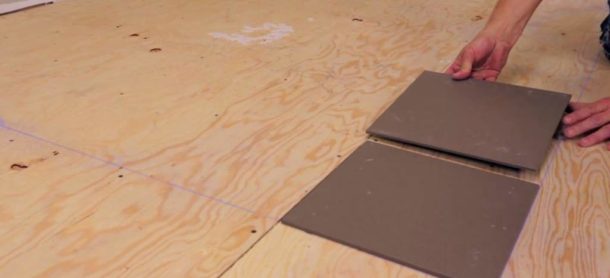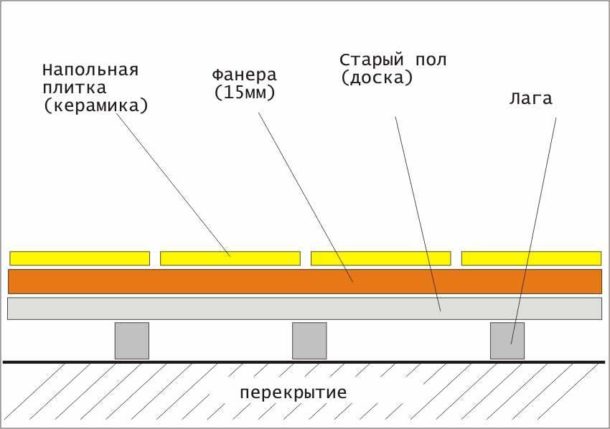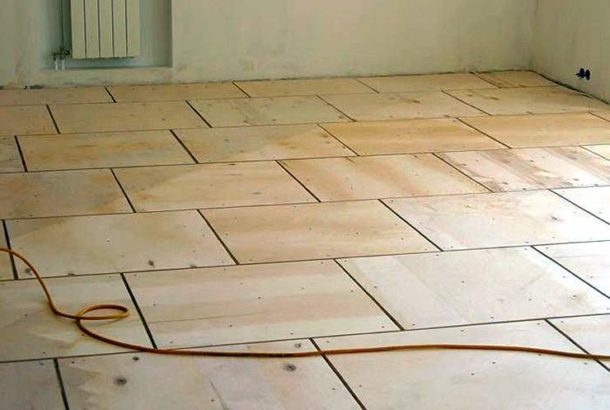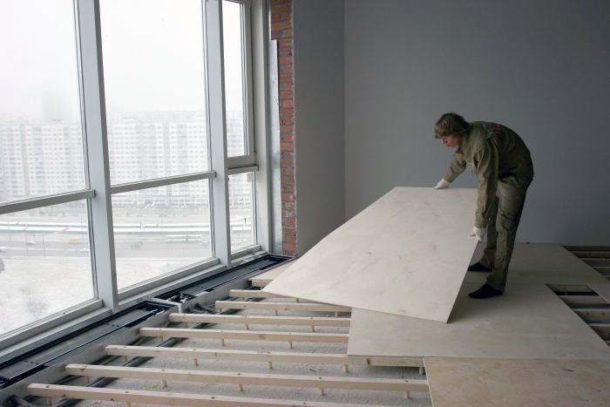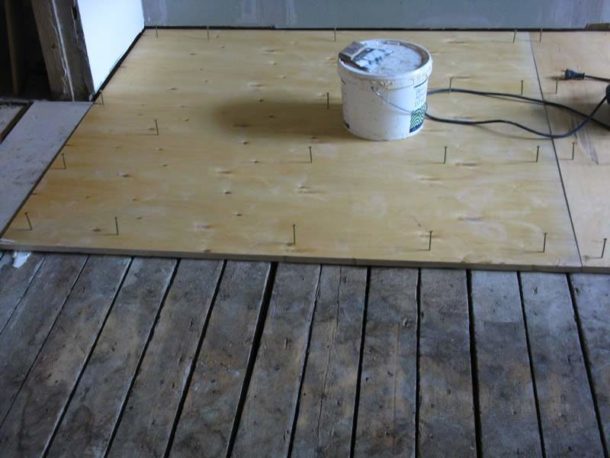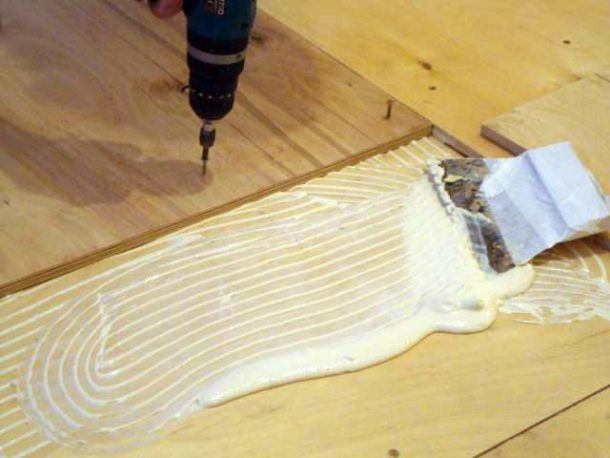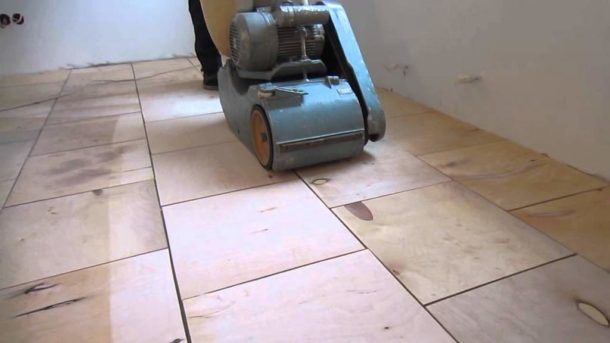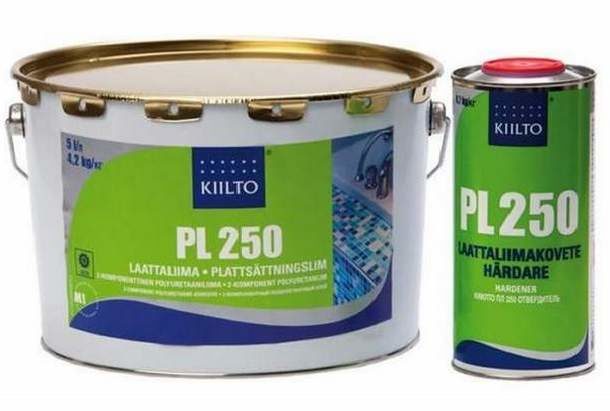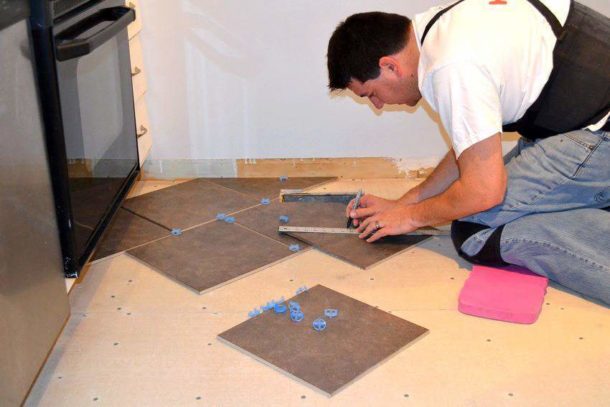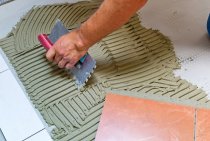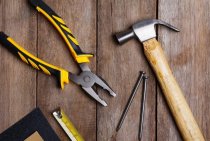Ceramic tiles are very easy to use, have excellent aesthetic and strength qualities, but at the same time make high demands on the base on which they fit. It is easiest to lay tiles on concrete, but what if the apartment has wooden floors or partitions? Is it possible to lay tiles on plywood if you choose this material for leveling the base?
Pros and cons of using plywood base
Before you figure out how ceramic tiles are laid on plywood, you need to figure out: why can't it just be laid on a wooden floor? The answer is simple: the physical characteristics of wood and ceramic tiles are too different, and such an undertaking will not lead to anything good.
Tiling requires an absolutely fixed base. Otherwise, the tile will collapse or begin to “walk”, cracks will go along the seams. Wood, on the other hand, changes its geometric dimensions under the influence of temperature and humidity. Therefore, to combine these materials, a lot of preparatory work is required, during which an intermediate layer is formed, leveling the differences between tiles and wood.
To prepare a high-quality foundation, you can use various methods and materials. But plywood laying has a number of undeniable advantages:
- This is the fastest way: you do not have to wait for a long time, as, for example, when a cement or self-levelling screed dries.
- When laying plywood on the floor, much less dust and debris is generated than with other methods.
- The weight of the structure being erected is insignificant, so the load on the logs or wooden floors will increase insignificantly.
- The method is quite simple, does not require specific skills or materials. At the same time, it will allow you to get a high quality base with the required characteristics.
Naturally, there are also disadvantages:
- Plywood is not compatible with underfloor heating.
- The quality of waterproofing works will be of great importance, especially in rooms with high humidity. This may result in additional costs.
For laying on the floor, you will need thick plywood, at least 22 mm. It is preferable (and for a bathroom or kitchen it is a must) that it is also moisture resistant. This will also affect the final cost of repairs.
Foundation preparation
Plywood can be laid both on draft floor boards and directly on logs.
For laying directly on the logs, you will need thicker plywood with a thickness of at least 30 mm, the optimal distance between the logs is 300 mm.
Most often, sheet material is laid on top of the floor boards, observing the following recommendations:
- Carefully examine the wooden floors. You can not leave defective or damaged elements: after laying the tiles, access to them will be closed.
- The boards must be cleaned of paint and impregnated with an antiseptic solution.
- A gap of 1 cm thick is left between the surface of the wooden floor and the wall around the perimeter to compensate for possible deformation of the wood. Subsequently, it is sealed with mounting foam or covered with a plinth.
- Good waterproofing is a must. As you know, the stone "attracts" water, and this will negatively affect the service life of the wooden base. Therefore, it is necessary to protect it: you can soak the boards with hot drying oil or latex, use other materials.
In order to make the plywood more rigid, it is recommended to cut each sheet into at least 4 pieces and fasten each piece separately.
- Before installing plywood, you should outline the height of the future base.To do this, draw a line on the wall using a level. You can use beacons, but this is less convenient.
It is better to fasten plywood in a combined way: the sheets are first planted on glue, and then additionally fixed with self-tapping screws. A layer of glue will not only ensure reliable fastening, but also smooth out the unevenness of the old floor.
- The thickness of the seam between the elements should be 1–2 mm. With such insurance, the plywood surface will not swell.
Often used laying in two layers of thinner plywood. In this case, the sheets are shifted relative to each other so that the joints do not match. The layers are glued together and fixed with self-tapping screws.
- The heads of the self-tapping screws should be slightly recessed into the plywood so that they do not interfere with the grinding of the base.
- Grinding is performed with a special machine in three directions: along, across and obliquely.
- Using a vacuum cleaner and a damp cloth, the plywood base is thoroughly cleaned of dust and debris.
- Plywood is primed in at least two layers. After applying each of them, you should wait at least five hours for the primer to dry.
- From above, plywood must be covered with a layer of waterproofing. It can be a film laid on walls or other materials.
Laying tiles
Laying floor tiles on plywood is not much different from installing on a concrete base. The main difference will be in the adhesive used. For fixing tiles on a wooden surface silicone-based adhesives or two-component polyurethane formulations are used. They remain elastic after drying, which allows you to compensate for possible fluctuations in the base. Also, such adhesives will provide additional waterproofing due to the components that make up their composition.
Tiles are laid on the floor from the middle of the room or from the farthest corner from the door. It all depends on the configuration of the room.
- The solution is diluted according to the manufacturer's recommendations so that the portion is enough for 1 m2 of installation. In this case, the glue will not have time to dry.
Before kneading the glue, dry laying should be done: see how it is more profitable and more beautiful to place tiles on the floor.
- After applying glue with a notched trowel to plywood, lay the tile, slightly pressing it into the solution with your hand. The position of each element is controlled by the level and adjusted until the mortar has set.
To obtain even, identical seams, special plastic crosses are inserted between the tiles.
- Laying tiles on the wall starts from the second row from the bottom. First, a wooden rail is screwed to the wall according to the level: the tile will rest on it until the glue sets. The bottom row is laid after the glue dries.
After the adhesive solution has hardened, the seams are processed grout, and after it dries, the surface is washed and polished if necessary.
